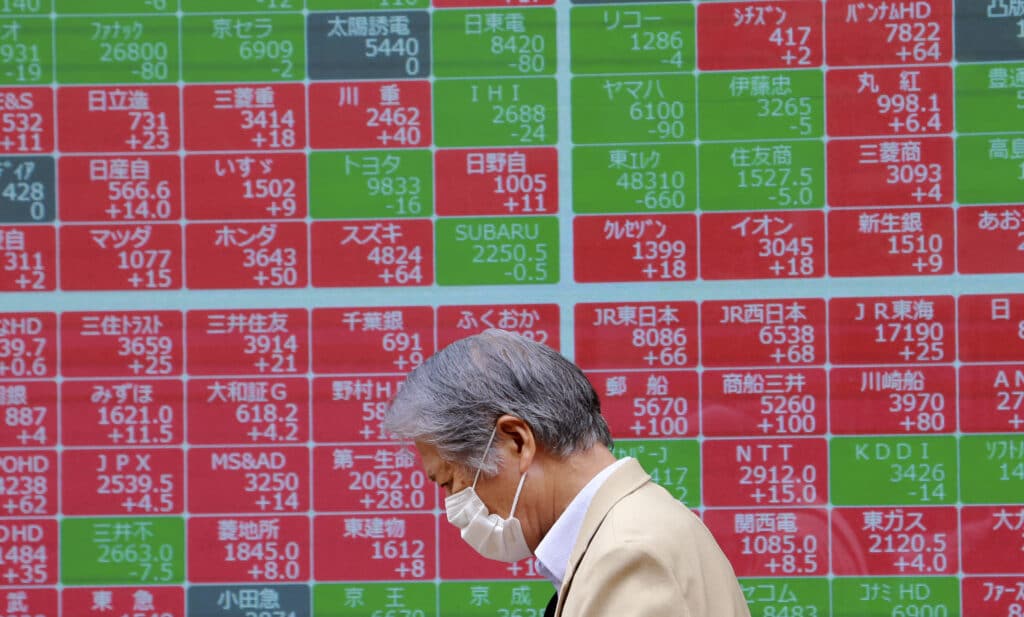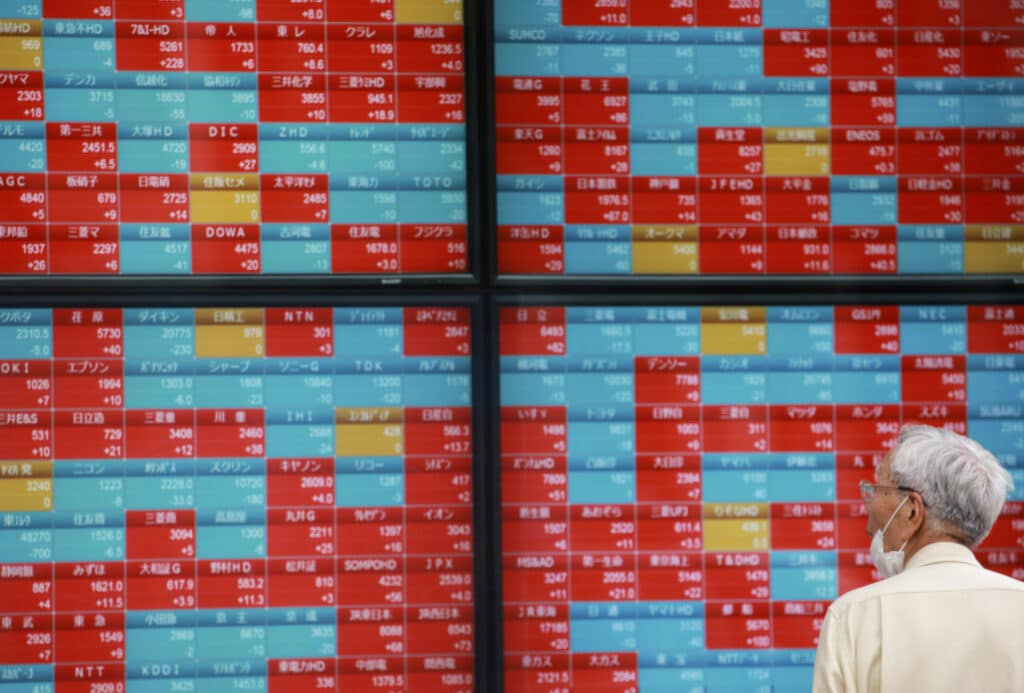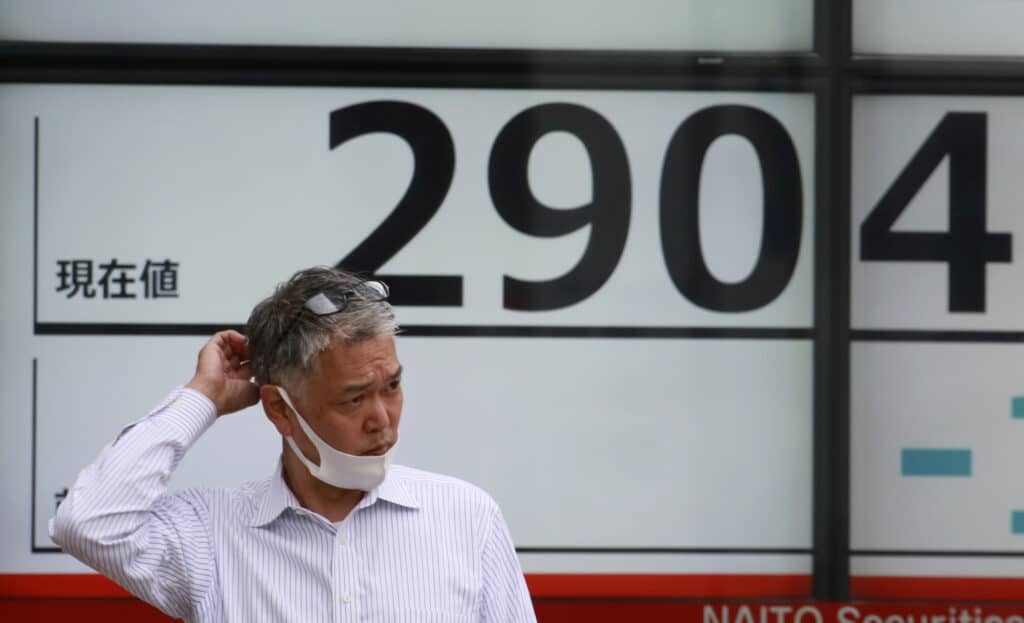BEIJING (AP) — Global stock markets declined Monday after Wall Street hit a new high as investors looked ahead to manufacturing indicators from Japan, China and South Korea.
London and Frankfurt opened lower, while Shanghai, Tokyo and Hong Kong edged lower, trading in a narrow range.
On Friday, Wall Street’s S&P 500 index turned in its biggest weekly gain in four months.

That gain “is generally telling of improving sentiment,” said Mizuho Bank in a report.
Investors have been encouraged by progress in Washington on an infrastructure spending plan, which followed a recovery from the jolt to markets last week when the Federal Reserve said it might start raising interest rates sooner than expected.
In early trading, the FTSE 100 in London lost 0.4% to 7,106.95 and the DAX in Frankfurt was unchanged at 15,609.20. The CAC 40 in Paris sank 0.3% to 6,605.40.
On Wall Street, the S&P 500 future was up less than 0.1% while that for the Dow Jones Industrial Average was off less than 0.1%.
On Friday, the S&P 500 rose 0.3%. That gave the index a weekly gain of 2.7%, its biggest since Feb. 5.

The Dow gained 0.7% while the Nasdaq Composite lost 0.1% to 14,360.39.
In Asia, the Shanghai Composite Index declined less than 0.1% to 3,606.37 and the Nikkei 225 in Tokyo shed less than 0.1% to 29,048.02.
The Hang Seng in Hong Kong closed down less than 0.1% at 29,268.30 after the start of trading was delayed until the afternoon due to a weather alert.
The Kospi in Seoul shed less than 0.1% to 3,301.89. The ASX-S&P 500 in Sydney was unchanged at 7,307.30.
India’s Sensex lost 0.3% to 52,764.13. New Zealand, Bangkok and Jakarta also declined. Singapore advanced.
Investors are looking ahead to monthly surveys of manufacturing activity in Japan, China and South Korea.
Production is recovering from last year’s plunge but faces shortages of processor chips and other disruptions.
Markets have swung between optimism about economic recovery supported by the rollout of coronavirus vaccines and unease that the Fed and other central banks might feel pressure to pull back stimulus to cool rising inflation.

The Fed, which says it believes U.S. price surges are temporary, surprised traders by saying it might start raising rates by late 2023, earlier than the previous 2024 target. Markets sank but have recovered most of their losses.
On Friday, the Commerce Department said one inflation measure closely watched by the Fed increased 0.4% in May and is up 3.9% over the past 12 months, well above the Fed’s 2% target.
Also Friday, President Joe Biden and a group of senators agreed on a $973 billion, five-year plan for spending on roads, railways and ports.
In energy markets, benchmark U.S. crude lost 12 cents to $73.93 per barrel in electronic trading on the New York Mercantile Exchange. The contract rose 75 cents to $74.05 a barrel Friday. Brent crude, the basis for international oil prices, shed 19 cents to $75.19 per barrel in London. It gained 62 cents the previous session to $76.18.
The dollar fell to 110.72 yen from Friday’s 110.84 yen. The euro advanced to $1.1935 from $1.1932. Read more business news







